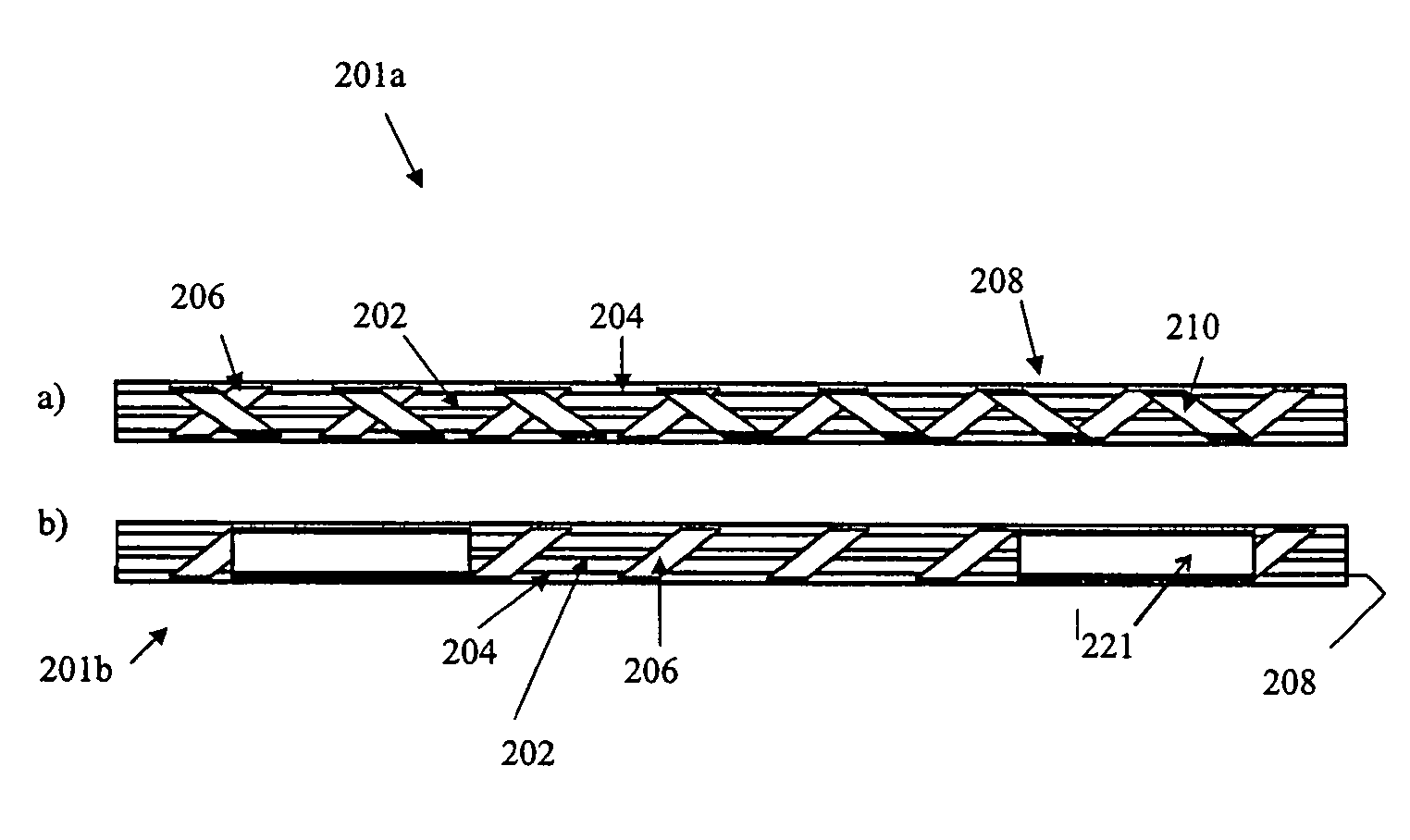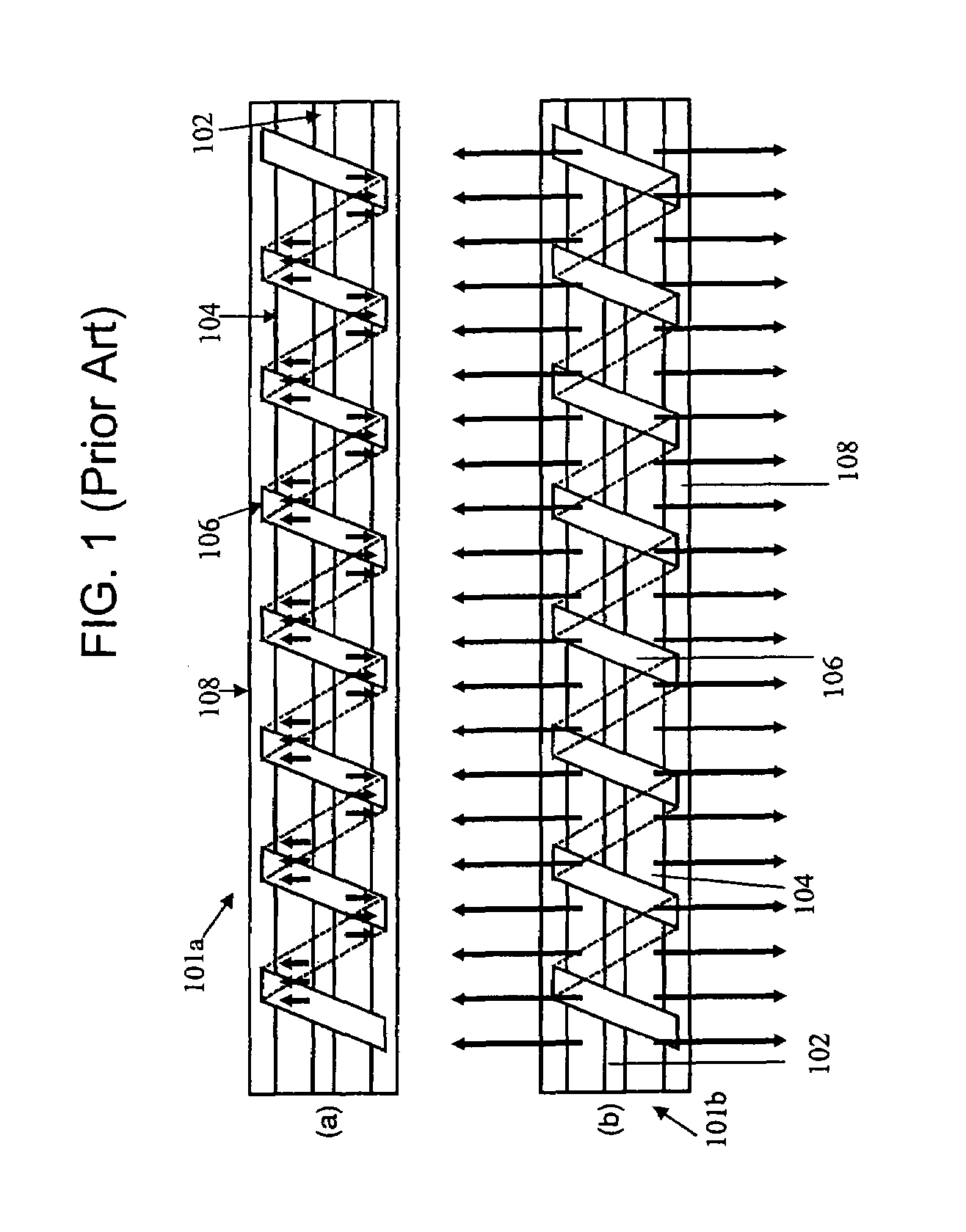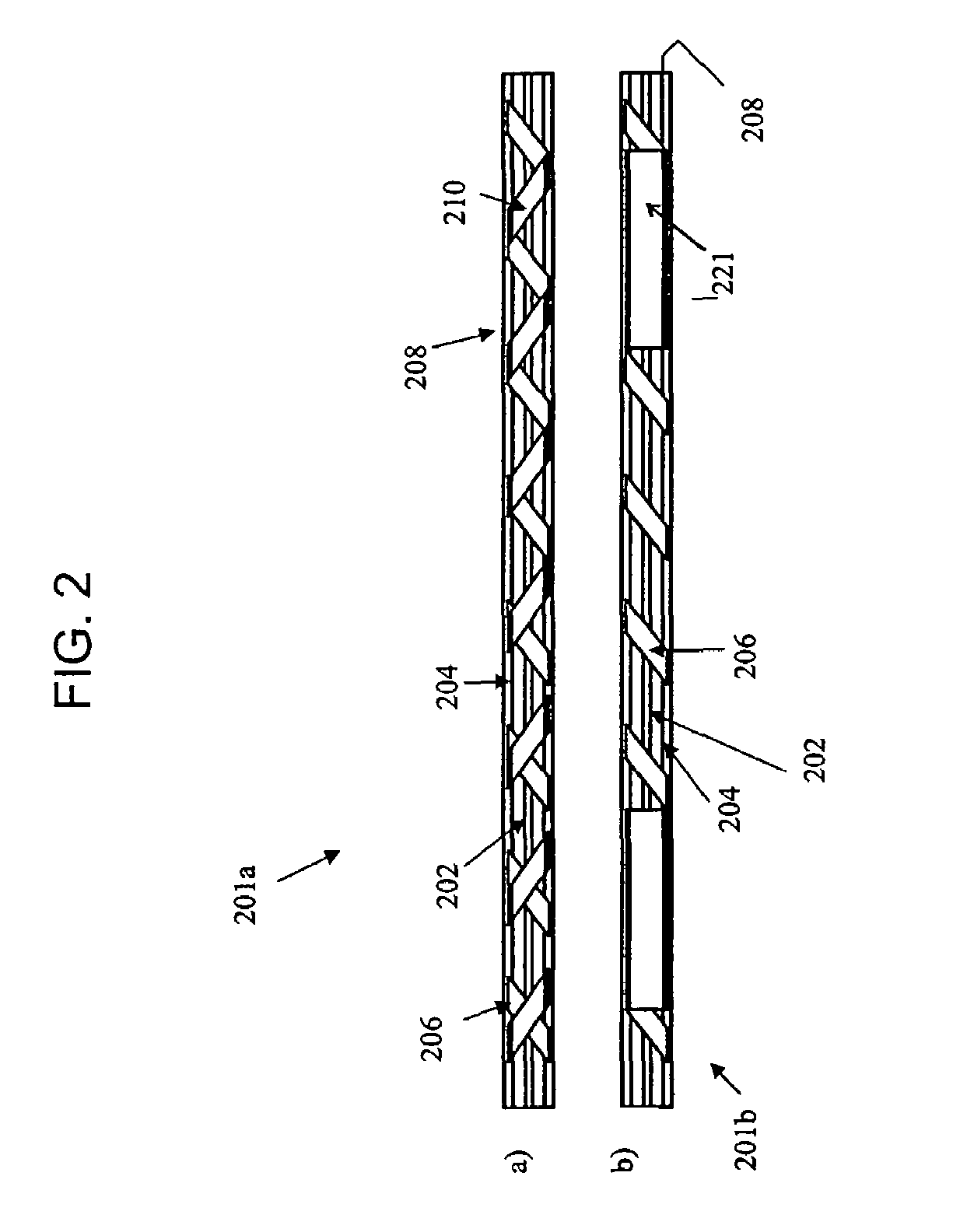Coaxial cable having high radiation efficiency
a radiation efficiency and coaxial cable technology, applied in the direction of power cables, cables, insulated conductors, etc., can solve the problems of relatively lesser bandwidth and directionality capabilities, series radiation hazards, and use in proximity to military personnel, and achieve high efficiency and high efficiency.
- Summary
- Abstract
- Description
- Claims
- Application Information
AI Technical Summary
Benefits of technology
Problems solved by technology
Method used
Image
Examples
Embodiment Construction
[0034]The present invention discloses mechanisms for significantly boosting the rate of conversion between bifilar and monofilar modes in radiating coaxial cable transmission lines. In an implementation as a leaky cable antenna, the present invention has been found to be highly efficient when compared to known manner leaky cable antennas. The mode conversion is a factor which may be measured in coupling / meter for EM waveband signal coupling attenuation rate or growth rate.
[0035]FIG. 2 shows two exemplary embodiments of mode conversion structures in longitudinal section elevation views. Beginning with FIG. 2 section a), there is shown a first exemplary embodiment of a leaky cable antenna 201a in accordance with the present invention.
[0036]The antenna 201a structure includes a center conductor 202, an inner insulator 204, a helical wound outer conductor 206, and an outer-insulator 208, all generally fabricated in a known manner. Conductive and dielectric materials may be used in accor...
PUM
 Login to View More
Login to View More Abstract
Description
Claims
Application Information
 Login to View More
Login to View More - R&D
- Intellectual Property
- Life Sciences
- Materials
- Tech Scout
- Unparalleled Data Quality
- Higher Quality Content
- 60% Fewer Hallucinations
Browse by: Latest US Patents, China's latest patents, Technical Efficacy Thesaurus, Application Domain, Technology Topic, Popular Technical Reports.
© 2025 PatSnap. All rights reserved.Legal|Privacy policy|Modern Slavery Act Transparency Statement|Sitemap|About US| Contact US: help@patsnap.com



